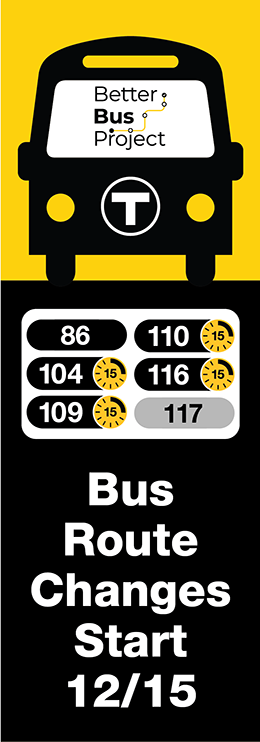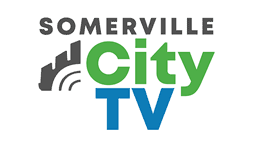
By Joseph A. Curtatone
(The opinions and views expressed in the commentaries and letters to the Editor of The Somerville Times belong solely to the authors and do not reflect the views or opinions of The Somerville Times, its staff or publishers)
Taking a closer look at notable city data—and interesting numbers.
More than 75 percent of pedestrians crossing illegally in Davis Square: Before signal timing changes were made last month at the main intersection in Davis Square, it could take between four and six minutes for pedestrians to legally cross the intersection diagonally. As a result, more than 75 percent of pedestrians were crossing without a signal. So recently, the City made changes to signal timing to increase safety and help the intersection run more efficiently and reduce delays for all users.
With the new signals, it’s estimated that over the course of an hour pedestrians get the walk signal about eight more times; drivers on Highland Ave. get about three more minutes of green time; drivers on Holland St. get about two–and-a-half more minutes of green time; and transit users on the MBTA busway get about eight more green signals. We’ll be monitoring the impact of the changes to see if we get the desired effect of reducing the number of people who choose to cross illegally. But you can always do your part to keep traffic safe. Please pay close attention to the signals and follow them, and if you are driving, be sure to always yield to pedestrians in the crosswalk. For more information, visit www.somervillema.gov/signaltiming/davissquare.
Four severe housing problems: The City has taken – and will continue to take – meaningful actions to address housing needs and significant disparities in access to housing opportunities. One data source we use to guide policy decisions is our Assessment of Fair Housing Report. This year, according to the report, the city’s Hispanic and Native American households have the highest percentage of households in Somerville (32 and 44 percent, respectively) experiencing one or more of four severe housing problems: incomplete kitchen facilities, incomplete plumbing facilities, more than one person per room, and cost burden greater than 50 percent. Family households of five or more people experience one or more of the four severe housing problems nearly 12 percent more often in Somerville than in the region. Non-family households, however, experience one or more of the four severe problems 6 percent less often in Somerville than in the region.
The Assessment of Fair Housing Report identifies fair housing-related goals in six specific focus areas: segregation and integration; disparities in access to opportunities; disproportionate housing needs; publicly supported housing; disability and access issues; and fair housing enforcement, outreach capacity, and resources. To read the report, visit www.somervillema.gov/sites/default/files/assessment-of-fair-housing.pdf. For a list of housing initiatives and efforts currently underway, visit www.somervillema.gov/afa.
Approximately 2,000 businesses that employ 26,700 workers: From 2009 to 2016, an estimated 5,000 new jobs were created in Somerville, and there are now approximately 2,000 businesses that employ about 26,700 workers. While the City continues to work with the current – and future – business community to create the jobs called for in SomerVision (the City’s 20-year Comprehensive Plan), careful consideration must also be given to the fields in which those jobs will be, the people who are going to fill those jobs, and the training they will need.
We recently released our local workforce development strategic plan, the Talent Equity Playbook, which highlights Somerville’s current and future jobs environment and labor market, workforce development resources, community priorities, actionable workforce development strategies, and ways to measure progress. The report cites that of the nearly 9,000 new jobs anticipated to be created in Somerville over the next ten years, 1,839 of them are expected to be in the computer and mathematics field. City staff will be working to implement strategies identified in the plan to increase job access and job training not just for unemployed residents, but also for the underemployed as well as all residents looking to improve their job and career prospects. A top priorty will be ensuring equitable access to opportunities for our residents.
Review the Talent Equity Playbook online at www.somervillema.gov/sites/default/files/somerville-talent-equity-playbook.pdf.
87 orders in the City’s first ever minibond sale: The City of Somerville’s first minibond sale resulted in 87 orders totaling $557,000. Residents living in zip code 02144 purchased the most minibonds with 37 percent of the total order, while residents in zip code 02143 purchased 34 percent of the total order and residents in zip code 02145 purchased 29 percent. When looking at investors by age range, the largest group of purchases (29 of the 87) came from residents in the 30-to-39-years-old group.
The funds from the minibond sale will support various City capital projects such as street and sidewalk improvements, Lincoln Park renovation, West Branch Library design, and more.
Data-based decision making is at the core of how the City of Somerville develops policy and sets priorities. Every day we check the latest 311 stats, and throughout the week we meet for in-depth review of departmental data and city trends. The Data Download column shares some of the data we’ve been reviewing recently, as well as interesting updates. To see more Somerville Data, visit the online Somerville Data Farm at www.somervillema.gov/datafarm.















Reader Comments